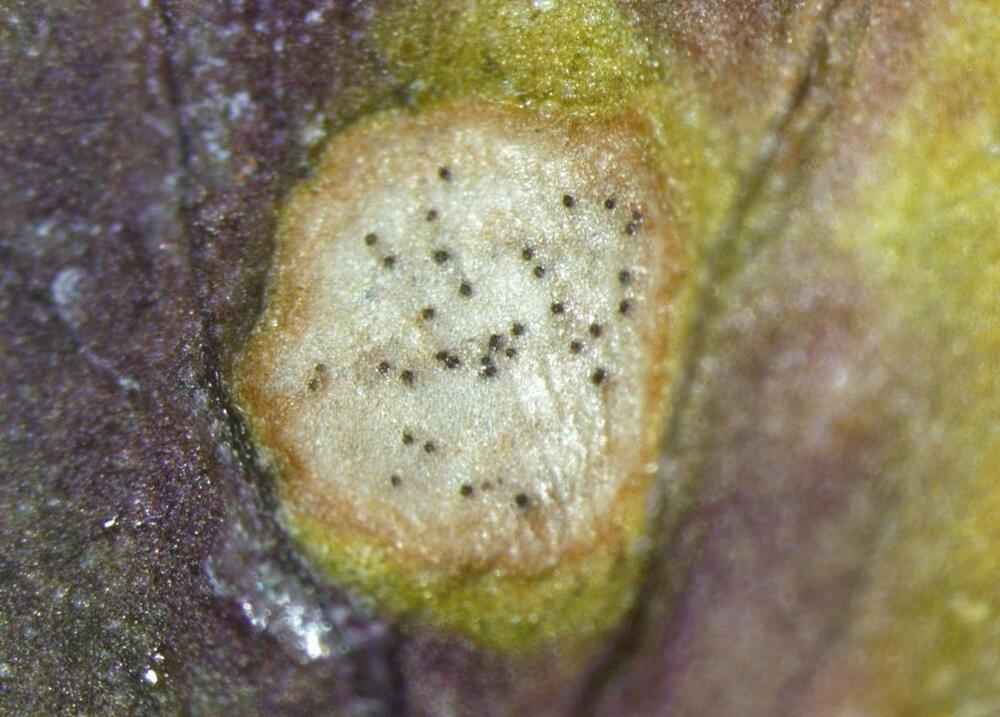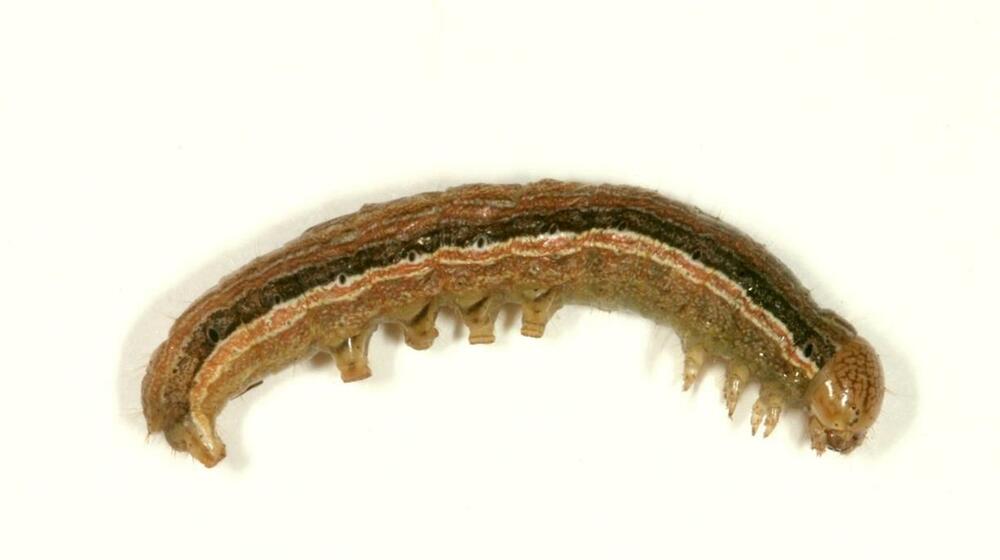Parsley
Description
Uses
Propagation
References
Common Pests and Diseases
Diseases
Category : Fungal
Alternaria leaf blight Alternaria petroselini
Symptoms
Brown-black necrotic lesions on leaves which may have chlorotic margins; lesions expand and coalesce causing the death of leaves and petioles; dark necrosis on crown and upper region of taproot; damping-off of seedlings
Cause
Fungus
Comments
Disease spread primarily by planting infected seed
Management
Plant only pathogen-free seed; apply appropriate foliar fungicide; rotate crops to non-umbelliferous varieties fro a period of 2-4 years if soil-borne fungiCercospora leaf blight Cercosporidium punctum
Symptoms
Small, necrotic flecks on leaves which develop a chlorotic halo and expand into tan brown necrotic spots; lesions coalesce and cause leaves to wither, curl and die
Cause
Fungus
Comments
Disease can be introduced through infested seed and spread by wind or water splash; symptoms usually occur on younger foliage first
Management
Plant only pathogen-free seed; rotate crops; plow crop debris into soil ofter harvest; apply appropriate fungicide spraysCrater spot Rhizoctonia solani
Symptoms
Small, water-soaked lesions on crowns or petioles in contact with soil; collapse of petioles; petioles drying; lesions develop a sunken appearance and a dry, firm texture
Cause
Fungus
Comments
Disease emergence is favored by warm, moist conditions and practices which introduce soil contact with crowns and petioles
Management
Destroy crop debris or plow deeply into soil; avoid planting seeds too deep to prevent petioles coming into contact with soil; apply appropriate protective fungicides at plant bases; rotate crops with non-hosts such as grains to prevent disease building up in the soil
Damping-off
Pythium spp.
Rhizoctonia solani
Symptoms
Soft, rotting seeds which fail to germinate; rapid death of seedling prior to emergence from soil; collpase of seedlings after they have emerged from the soil caused by water-soaked reddish lesions girdling the stem at the soil line
Cause
Fungi
Comments
Damping-off diseases favor conditions which slow seed germination; fungi can be spread in water, contaminated soil or on equipment
Management
Avoid planting parsley in poorly draining, cool, wet soil; planting in raised beds will help with soil drainage; plant high quality seed that germinates quickly; treat seeds with fungicide prior to planting to eliminate fungal pathogensPowdery mildew Erisyphe heraclei
Symptoms
Powdery growth on leaves, petioles flowers stalks and bracts; leaves becoming chlorotic; severe infections can cause flowers to become distorted
Cause
Fungus
Comments
Fungus can spread long distances in air; disease emergence is favored by high humidity and moderate temperatures; infection is most severe in shaded areas
Management
Plant tolerant varieties; avoid excess fertilization; protective fungicide applications provide adequate protection; sulfur application can be used in infection occurs early in season
Rust
Puccinia spp.
Uromyces spp.
Nyssopsora spp.
Symptoms
Light green discolored lesions on leaves which become chlorotic; yellow-orange pustules on underside of leaves; stems bend and become swollen or distorted; plants may be stunted
Cause
Fungi
Comments
Some species infect only parsley while others have alternative hosts which may provide a reservoir for the disease; disease emergence is favored by high humidity
Management
Plant in well-draining soils to reduce humidity around plants; apply appropriate systemic fungicideSeptoria leaf spot Septoria petroselini
Symptoms
Small, angular, gray-brown spots with defined red-brown margins on leaves; black fungal fruiting bodies may be visible on surface of lesions; leaves becoming chlorotic and necrotic
Cause
Fungus
Comments
Disease spread via infected seed, by contaminated irrigation water and by equipment or people moving through wet plants
Management
Control of disease is reliant on cultural control methods and good sanitation practices: use pathogen free seeds or treat seeds with fungicide prior to planting; rotate crops; plow plant debris into soil; if disease is present avoid working with infected plants when foliage is wet; apply appropriate protective fungicidesCategory : Viral
Carrot motley dwarf (CMD)
Carrot redleaf virus (CRLV)
+ Carrot mottle virus (CMoV)
Symptoms
Yellow and red leaves; stunted plant growth
Cause
Viruses
Comments
Disease transmitted by aphids; both viruses must be present to cause carrot motley dwarf
Management
Avoid planting coriander in close proximity to overwintered carrot fieldsPests
Category : Insects
Aphids (Willow-carrot aphid) Cavariella aegopodii
Symptoms
Small soft bodied insects on underside of leaves and/or stems of plant; usually green or yellow in color; if aphid infestation is heavy it may cause leaves to yellow and/or distorted, necrotic spots on leaves and/or stunted shoots; aphids secrete a sticky, sugary substance called honeydew which encourages the growth of sooty mold on the plants
Cause
Insect
Comments
Distinguishing features include the presence of cornicles (tubular structures) which project backwards from the body of the aphid; will generally not move very quickly when disturbed; willow-carrot aphid will also attack parnip, carrot and celery
Management
If aphid population is limited to just a few leaves or shoots then the infestation can be pruned out to provide control; check transplants for aphids before planting; use tolerant varieties if available; reflective mulches such as silver colored plastic can deter aphids from feeding on plants; sturdy plants can be sprayed with a strong jet of water to knock aphids from leaves; insecticides are generally only required to treat aphids if the infestation is very high - plants generally tolerate low and medium level infestation; insecticidal soaps or oils such as neem or canola oil are usually the best method of control; always check the labels of the products for specific usage guidelines prior to useArmyworm Pseudaletia unipuncta
Symptoms
Singular, or closely grouped circular to irregularly shaped holes in foliage; heavy feeding by young larvae leads to skeletonized leaves; shallow, dry wounds on fruit; egg clusters of 50-150 eggs may be present on the leaves; egg clusters are covered in a whitish scale which gives the cluster a cottony or fuzzy appearance; young larvae are pale green to yellow in color while older larvae are generally darker green with a dark and light line running along the side of their body and a pink or yellow underside
Cause
Insect
Comments
Insect can go through 3–5 generations a year
Management
Organic methods of controlling armyworms include biological control by natural enemies which parasitize the larvae and the application of Bacillus thuringiensis; there are chemicals available for commercial control but many that are available for the home garden do not provide adequate control of the larvae
Cutworms
Agrotis spp.
Peridroma saucia
Nephelodes minians
and others
Symptoms
Stems of young transplants or seedlings may be severed at soil line; if infection occurs later, irregular holes are eaten into the surface of fruits; larvae causing the damage are usually active at night and hide during the day in the soil at the base of the plants or in plant debris of toppled plant; larvae are 2.5–5.0 cm (1–2 in) in length; larvae may exhibit a variety of patterns and coloration but will usually curl up into a C-shape when disturbed
Cause
Insects
Comments
Cutworms have a wide host range and attack vegetables including asparagus, bean, cabbage and other crucifers, carrot, celery, corn, lettuce, pea, pepper, potato and tomato
Management
Remove all plant residue from soil after harvest or at least two weeks before planting, this is especially important if the previous crop was another host such as alfalfa, beans or a leguminous cover crop; plastic or foil collars fitted around plant stems to cover the bottom 3 inches above the soil line and extending a couple of inches into the soil can prevent larvae severing plants; hand-pick larvae after dark; spread diatomaceous earth around the base of the plants (this creates a sharp barrier that will cut the insects if they try and crawl over it); apply appropriate insecticides to infested areas of garden or field if not growing organicallyCategory : Nematodes
Root knot nematode Meloidogyne spp.
Symptoms
Galls on roots which can be up to 3.3 cm (1 in) in diameter but are usually smaller; reduction in plant vigor; yellowing plants which wilt in hot weather
Cause
Nematode
Comments
Galls can appear as quickly as a month prior to planting; nematodes prefer sandy soils and damage in areas of field or garden with this type of soil is most likely












